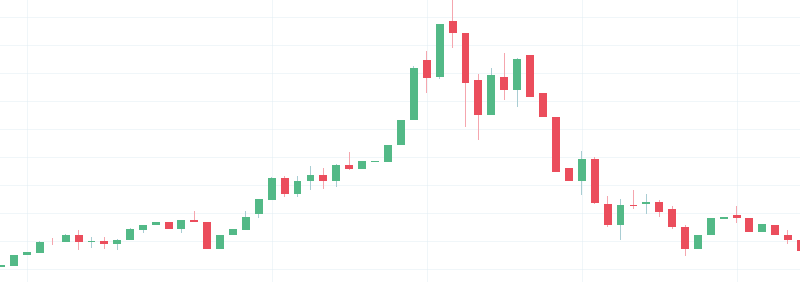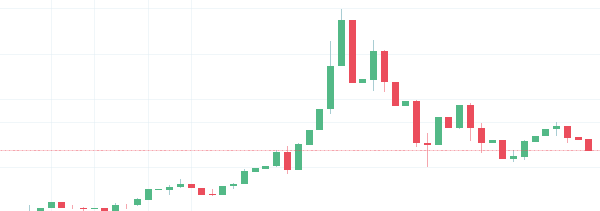It’s no secret – since early January 2018, Bitcoin has steadily dropped from its all time high price of nearly $20,000 per coin.
It’s bottomed out several times, fluctuating as altcoins (cryptocurrencies that aren’t Bitcoin) boom and bust with each movement.
Even before Bitcoin dropped in value, back in December 2017 during the major rally to $20k, crypto was routinely being compared to some of the more famous economic “bubbles” throughout history.
The first, and most disparaging, comparison was to Tulip Mania – a period in the Dutch Golden Age where tulip bulb prices quickly skyrocketed, propelled by speculators, and then quickly collapsed shortly thereafter.
Armchair historians from major media outlets like CNN, Fox, and MSNBC relished the chance to highlight the similarities between tulip bulbs and digital currencies. Both, they claimed, had no real value.
Tulip Mania was relatable, humorous, and an easy way to draw eyeballs to television sets – all while discrediting Bitcoin.
The one thing they all overlooked, however, was that Tulip Mania probably never actually happened – at least the way history revisionists would have you believe.
Economists have pointed to Tulip Mania for decades as a “cautionary tale” of the dangers that a free market presents.
Supposedly everyone in Dutch society, from wealthy aristocrats to impoverished paupers, were buying up tulip bulbs faster than they could be harvested.
The bottom fell out of the market in 1636 – causing buyers to default on purchase agreements, bankrupting traders who were holding large quantities of bulbs and allegedly plunging the national economy into a recession.
In reality, Tulip Mania was much more pedestrian. Only a very small part of the population actually participated in the phenomenon – making the repercussions of the tulip market collapse minor. There are no written historical accounts of anyone subsequently going bankrupt.
In addition, the tulip bulb crash wasn’t even caused by buyers defaulting on contracts. A research paper written in 2007, by Economist Dr. Earl Thompson, explains that the tulip bubble was in fact a result of legislation.
The Dutch government forcibly transformed tulip futures contracts into options contracts, enabling risk-free speculation – unintentionally causing prices to rise exponentially. In order to undo its mistake, the government stepped-in and halted trading altogether, eviscerating tulip prices in the process.
So when “experts” drag out economic bubbles as a tool to discredit cryptocurrency – it’s a good idea to always consider whether or not that comparison is actually valid.
That is not to say, however, that Bitcoin’s price movement doesn’t correctly resemble other famous bubbles.
Let’s take a look…
Look at the chart below. Does it look familiar? Can you guess what this is a chart of?

No, it’s not Bitcoin. And no, it’s definitely NOT tulip bulbs.
It’s actually a monthly chart of the NASDAQ composite index (IXIC) during the infamous “dot com” bubble of the late ‘90s – a period of four years marked by excessive speculation in response to the usage and adoption of the internet.
By comparison, let’s take a look at a weekly chart Bitcoin in terms of US Dollars. We are looking at the weekly chart here (instead of monthly) because as many traders have seen by now, everything moves faster in crypto:

Now I know what you’re thinking….
No, that’s not the same chart – but the movement looks nearly identical, doesn’t it?
Much like the dot com bubble, Bitcoin experienced a period of “excessive growth” in late 2017. It was over-bought by excited speculators, resulting in a major sell-off in January 2018 by early investors.
The stock market took several years to recover from the dot com bubble (and subsequent crash), but from the ashes rose several extremely strong tech companies. I believe crypto will undergo the same transformation, establishing a core set of “bullet-proof” currencies – but with one major difference.
Like I said, everything in cryptocurrency moves faster than the traditional markets. Bitcoin took just a matter of months to bottom out – hitting support several times in the process. A “double bottom”, like we saw with Bitcoin prices this year and the stock market following the dot com “bubble burst”, is a universal sign of a trend reversal.
But unlike the stock market, Bitcoin won’t need several years to recover. It will likely rally very quickly, hitting another new all-time high by the end of 2018.
Many would see the similarities between the dot com bubble and Bitcoin as a bad thing. But I disagree – I actually think that it presents an incredible opportunity to traders that can successfully navigate the markets.
Because as the price of Bitcoin rises and falls, altcoins (digital currencies that aren’t Bitcoin) are launched into the stratosphere and back – providing entry and exit points for laser targeted short-term trades.
Most people missed out on the meteoric rise of many altcoins in 2017 – which saw astronomical quadruple digit gains in a matter of months.
It’s unlikely that Bitcoin will be available at this price much longer, so as the market gears up for yet another rally to close out the year, I have one question to ask:
Will you be ready for the next Bitcoin explosion?
I hope so – otherwise you’ll be kicking yourself for missing out on yet another massive opportunity for downright staggering profits.







